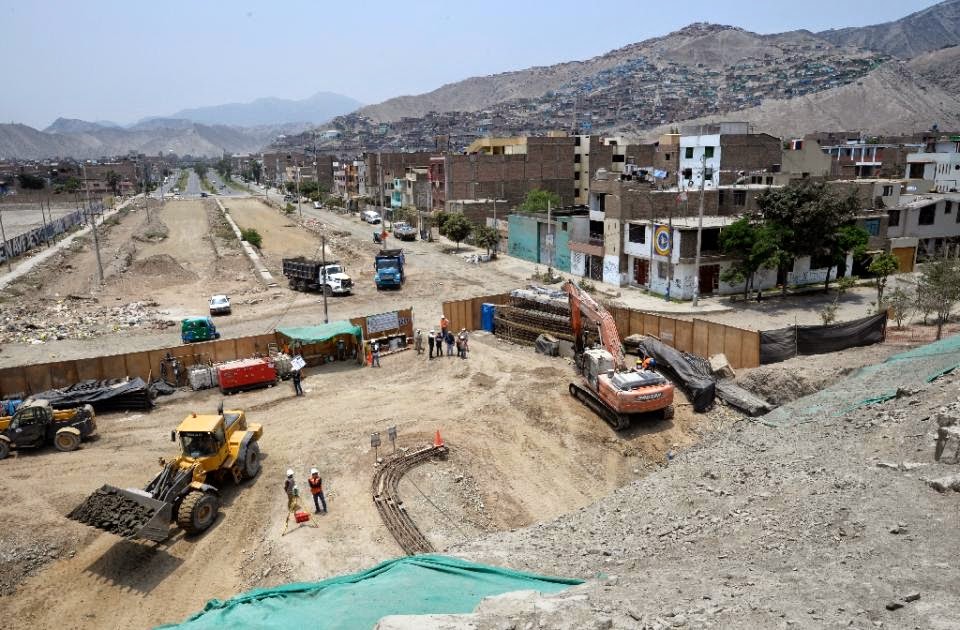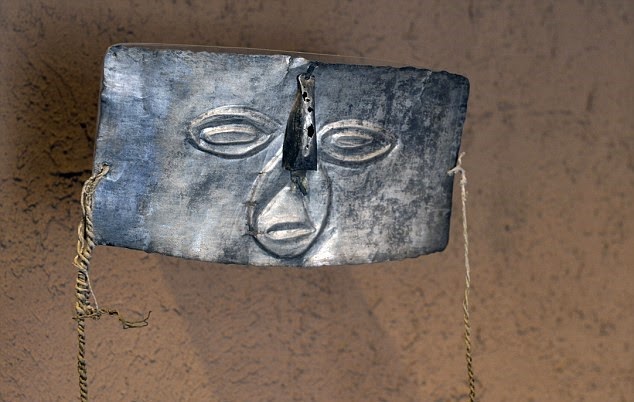
complex, on March 4, 2015 in Lima [Credit: AFP/Cris Bouroncle]
At first glance, the site looks like an empty hill on the city's east side -- a bald spot surrounded by a slum, a new university and a shopping mall scheduled to open soon.
But then, a low structure becomes visible -- Puruchuco, an Incan palace with a 16th-century burial ground, and untold numbers of priceless artifacts buried within.
Just 10 percent of the 75-hectare (190-acre) complex has been explored, but that small slice held more than 2,000 mummies and some 100 artifacts in gold, silver and copper.
"The entire Puruchuco hill has monuments, cemeteries, pre-Hispanic mausoleums that have never been explored because of a lack of funding," said archaeologist Clide Valladolid, the director of a small museum at the site.
The problem is that as the Peruvian economy has boomed in recent years -- registering average annual GDP growth of 6.4 percent in the decade to 2013 -- Lima, a city of more than nine million people, has expanded voraciously, with rich and poor alike snapping up real estate.
Puruchuco sits right in the growing capital's path.
Authorities want to extend Javier Prado Avenue, one of the city's main arteries, to link it up with Carretera Central, the highway to the Andean region and the main route to the capital for food and other products from the country's interior.
Originally, the idea was to split Puruchuco in two and build the road straight through it -- a plan that initially got a green light from authorities.
But then the culture ministry intervened, asking for construction to be halted.

near the pre-Inca Puruchuco, "Feather helmet" complex, on March 4, 2015
[Credit: AFP/Cris Bouroncle]
With a little creative engineering, planners came up with a system of two three-lane tunnels, each 45 meters (150 feet) long, that will pass through the narrowest part of the hill.
Work on the $8.9 million project began last August using non-disruptive digging techniques and no explosives, and is due to be completed in June.
"It was the engineering equivalent of heart surgery to avoid one of the cemeteries on the upper part of the hill," said engineer Onerio Robles, who designed the project.
"When we had defined the route and begun excavating, we found a mummy a meter away from the tunnel's path and had to recalculate everything."
An archaeologist at the Universidad Mayor de San Marcos had warned in 2010 that there was a pre-Inca palace hidden in that part of the hill.
Puruchuco means "feather helmet" in the Quechua language.
The complex is named for a headpiece on display at the site museum. Crowned with brightly colored feathers, it was worn by the curaca, or ruler, who lived in the palace.

of the almost unknown Puruchuco -"Feathered Head-Piece" in Andean Quechua
language-complex in Lima [Credit: AFP/Getty Images]
More than five centuries ago, Puruchuco was an important administrative and religious center where the curaca led rituals.
Today, the palace has been painstakingly reconstructed and is open for visits.
Authorities have promised to expand the site museum, opening the largest collection of mummies in the country and a laboratory to study them.
Valladolid, the museum's director, wants to bring back 2,000 mummies that were discovered at Puruchuco in 2000 during a separate construction project -- a road through a slum that had sprung up atop the largest burial ground.
Some of the mummies' bones had been broken with sharp swords in combat -- apparently an early battle with the Spanish conquistadors, who descended on the area in 1532 and made Lima the capital of the Viceroyalty of Peru.
One of the mummies' skulls was pierced by a musket ball -- it is believed to be the first person killed by gunfire in the Americas.
Many more discoveries are likely lurking in the hill, said Valladolid.
"In the lower part of Puruchuco, called Huaquerones, there are three pyramids with ramps and cemeteries. We need to fence them off to stop squatters from moving in," she said.
Author: Roberto Cortijo | Source: AFP [March 21, 2015]